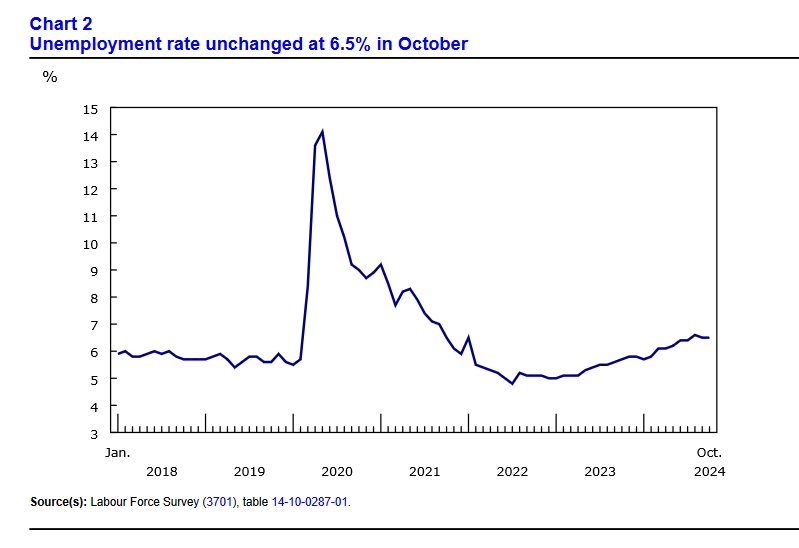Canada’s Unemployment Rate Holds Steady at 6.5% Amid Modest Job Growth
Canada’s unemployment rate remained unchanged at 6.5% in October, according to the latest data from Statistics Canada. The economy added 14,500 jobs last month, slightly under the expectations of economists who had forecast a stronger gain. Despite this modest growth, the country continues to face challenges in its labor market, with full-time employment showing a slight increase while part-time job numbers remained largely unchanged.
The gains in employment were primarily in business services, building trades, and other support services, while sectors such as finance, insurance, and public administration saw fewer positions. Overall, total hours worked in Canada increased by 1.6% year-over-year, signaling a higher volume of labor output. Furthermore, average hourly wages rose by 4.9% compared to last October, reaching $35.76, a $1.68 increase.
While youth employment saw a slight uptick for the first time since April, the youth employment rate continues to show a decline of 2.7 percentage points from the previous year. This trend highlights the ongoing challenges faced by younger workers and newcomers to Canada in securing stable employment.
Inflation and Interest Rates Impact Hiring
Canada’s labor force has expanded by 2.4% over the past year, largely driven by record levels of immigration. However, the growth in the number of available workers has not translated into significant job creation. High interest rates and persistent inflation have dampened demand, leading to slower business investment and hiring. Despite four rounds of interest rate cuts, Canada’s job market has been muted, and the labor force participation rate has seen a consistent decline.
As a result, the employment rate—the percentage of the total labor force that is employed—has fallen from 61.9% in October of last year to 60.6% in October 2024. This trend suggests that although more people are entering the job market, many are unable to find employment, contributing to ongoing pressure on Canada’s economy.
The Future of Canada’s Interest Rate Policy
With just one more employment report before the Bank of Canada’s next interest rate decision, economists remain divided on the need for further cuts. CIBC economist Avery Shenfield noted that the latest employment data, while mixed, still leans toward a potential 50 basis-point rate cut.
In a recent statement, Bank of Canada Governor Tiff Macklem acknowledged that while layoffs have remained relatively modest, business hiring has been weak, particularly affecting young people and immigrants. Macklem expressed hope that continued rate cuts would stimulate economic growth and employment, particularly in sectors that have struggled in recent months.
As Canada’s job market navigates these challenges, attention will turn to the Bank of Canada’s next steps and how they might influence the broader economic landscape moving into the final months of 2024.
Source : Swifteradio.com


